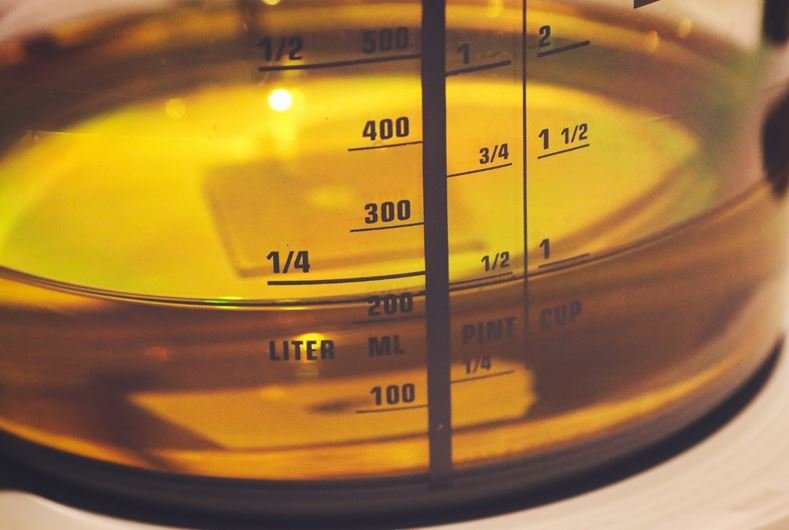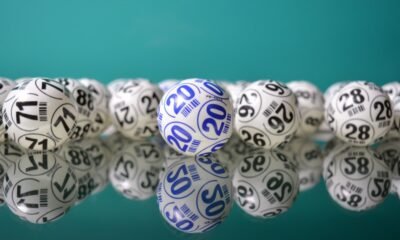News
How Many Ounces in A Cup: Liquid and Dry Conversions

How many ounces in a cup? In order to be useful, the difference between liquid ounces and dry ounces needs to be clearer. So, here’s a little table to explain them in different quantities:
- In a 16-ounce glass, 6 tablespoons = 1 ounces
- In a 16-ounce glass, 3 tablespoons = 1 ounces
- In a 32-ounce glass, 3 tablespoons = 4 ounces
- In a 32-ounce glass, 1 tablespoon = 3 ounces
This table does nothing to help you visualize the difference between pouring some water into a glass and pouring some coffee grounds into a kettle or pot. But if you want to convert liquid ounces to dry ounces in a cup, it’s not that hard. Just fill your measuring cup halfway, add water, add cups, add cups, and let it sit for a few seconds to make sure the liquid doesn’t spill out all over the counter, then count out 16 tablespoons. You should be able to do this in your head once you’ve figured out the difference.
If the difference between liquid ounces and dry ounces in a cup is 2 teaspoons or less, this method works just fine. Otherwise, the more accurate method is to divide your weight by the volume of water in the bottle or jar you’re using, since you can then multiply the ounces in a cup by the volume to get the volume of liquid in cups.
If you’re curious, it’s 14 fluid ounces to 21 dry ounces in a cup.
[lwptoc]
Converting Baggies to Cups and How to Read the Dispenser
Some packaged food or vitamins might come in a little bag. Don’t bother measuring it. Just scoop the contents into a cup to make sure you have the correct amount. If the product comes in a liquid container that opens, put the cup under it, and then grab the bottle to pour into the cup and see what it says. It is easy to measure because one ounce in ml is 30millimeters. If it’s a package of pills, you can put your finger in it to find out what the active ingredient is.
The only times you should ever measure anything out for a bottle, medicine, or vitamin, are if you have concerns about the number of active ingredients in it, or if it comes in multiple servings. These packages have ingredients listed. It’s also very helpful if the label has some nice, clear numbers or pictures so you can see what the product is. It helps to find how many ounces in a cup. In other words, don’t assume that the same item will taste the same if it comes in different-sized packages. If you must make a rough estimate of how much it will weigh in your cup, you might find out you’re not getting nearly as much of the ingredient as you thought you were.
Or, if you see that the bottle weighs 4 ounces (4 oz to ml = 118) and has 50% of your daily values listed on the label, but you’re not sure exactly what that means, grab one of those two jars next to the scale and pour a portion of each, just to make sure you’ve got the right amount. And for those cases where you know exactly what you’re looking for: if you’re looking at a liquid package, measure out the first half of the container. If it’s a powder, the first quarter. If the package has both, you can pour half of each.
Butter and Coconut Oil
Butter is measured in sticks. Coconut oil comes in droplets. So why do you use both? If you ask someone that, they’ll tell you it’s to bring out the flavor in your cooking. That might be true, but you’re a grownup. Learn how to read the label first. And that’s the bottom line here: there’s no real reason to measure these things out. If you want to measure your butter and coconut oil (or bacon fat, mayo, salad dressing, salsa, marinade, etc.), find a reliable online kitchen scale that you’re comfortable with and practice.
If you must take your measuring cup out of the drawer and put it on the kitchen scale, figure out how many ounces in a cup are and then figure out how much that equals in fluid ounces in a cup. Then just add a tablespoon to your butter or a spoonful to your coconut oil to make it into a new measurement. And that way, you can throw out the old measuring cup when you’re done and start over in the drawer with a new one.
Liquid Fluid OR Volume
- Liquids – (0.375) 16 oz = 1 fluid ounces
- Drinks – (0.333) 16 oz = 1 fluid ounces
- Dessert – (0.188) 16 oz = 1 fluid ounces
- Pop – (0.112) 16 oz = 1 fluid ounces
- Soda – (0.02) 16 oz = 1 fluid ounces
- Sugar – (0.003) 16 oz = 1 fluid ounces
- Dry-Soap – (0.375) 32 oz = 1 tablespoons
- Bottled Water – (0.1) 32 oz = 1 fluid ounces
- Mist – (0.012) 32 oz = 1 fluid ounces
If you’re looking for a recipe for a coffee cake, one that makes 12 servings, you might want to calculate the liquid amounts based on the cup measurements. If you want to know how many ounces of liquid you have in the kettle, you might want to use the kettle-width method to figure out the difference between fluid ounces and dry ounces in a cup. If you just want to know how much liquid you have in a mixing bowl, you can use a calculator like this one. For most recipes, you can just divide the cups by 12 (so you get 1.13 ounces in a cup) and multiply the result by the quantity of fluid in the recipe.
Measure out Only a Few Things at a Time, and Use One Measurement Per Thing
A good rule of thumb is that you should only measure out a few things at a time. If you’re doing a little of this, a little of that, you’ll end up over- or under-dosing on most ingredients. You might accidentally over-dose on vitamins or overdose on sugar, just because you were trying to make do with the small little cups you keep in your cupboard. You might also think that it’s easy to follow a recipe and add all the ingredients at once. It takes practice to learn how much of a liquid you should be using per recipe, so start small and build up to measuring out a full teaspoon or so at a time.
For olive oil, the American Heart Association suggests using half a teaspoon of olive oil for cooking and 200-400 milligrams for non-heat cooking. That means it’s up to you to check the labels of your products and figure out how much of each you’re using. It helps to figure out how many ounces in a cup. But at the very least, you can always just round down if you’re adding too much.
Dry Weight
For many things, you can calculate dry weight by dividing the weight by the volume (or in ounces). In this case, that will get you to the dry-based ounces. You can get a dry-based ounce by dividing the weight by 12 and dividing by 1.
Here are some examples to use with the dry-weight conversion:
- 2 cups of flour = 8 ounces dry weight
- 1 cup of sugar = 8 ounces dry weight
- 2 ounces of honey = 2 ounces dry weight
- 2 ounces of oil = 2 ounces dry weight
- 2 ounces of corn syrup = 2 ounces dry weight
- 2 ounces of vanilla extract = 2 ounces dry weight
- 2 ounces butter = 2 ounces dry weight
Here are some examples using the volume-based ounces:
- 1 cup of flour = 1 fluid ounce dry weight
- 1 cup of sugar = 1 fluid ounce dry weight
- 1 cup of water = 1 fluid ounce dry weight
- 1 cup of oil = 1 fluid ounce dry weight
- 1 cup of honey = 1 fluid ounce dry weight
- 1 cup of butter = 1 fluid ounce dry weight
We have used this volume-based dry-weight conversion in the past to calculate dry weights for baked goods, spices, oils and even for dry baking soda. For example, a pound of baking soda is dry-based. Dry-based baking soda ounces in a cup are about 40% of a pound. So, if you have a recipe for a pound of baking soda and you use 16 ounces of baking soda, you will be using about 12 ounces dry. For the 1 cup of dry-based baking powder, you would need 32 ounces of dry-based baking powder. We have found that a calculator called SodaCalc is usually the most accurate way to convert dry-based and volume-based dry weight to ounces.
Conclusion
We have covered the basics of measurements especially how many ounces in a cup. There are a few more things to consider when you use measuring cups and spoons. Always check your recipes against the package, especially if the weight is different in the materials used to make them. If you are substituting ingredients, be sure that you measure those ingredients in the same way you measured the original ingredient. You want to get the best ratio of weight to volume for the final product.
Check out: How many Ounces in a Gallon of Water?












